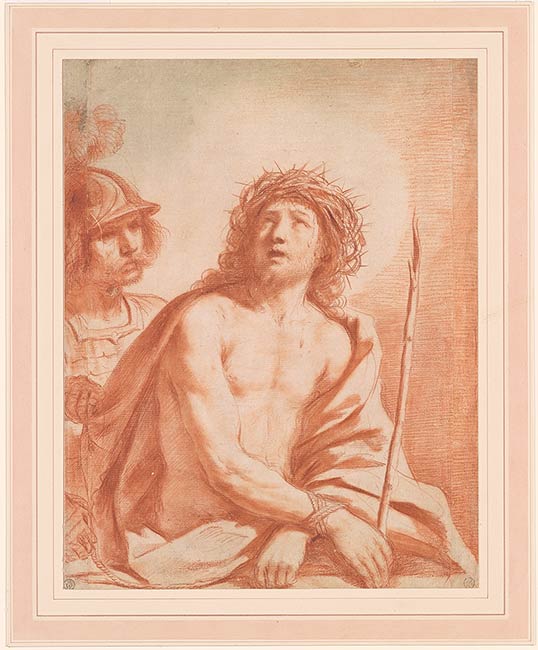
Watermark: Scalloped cartouche.
For Guercino's painting, now in the Galleria Sabauda, Turin.
As Stone has noted, the red chalk drawing has strips added to the left and right of Christ, so that the sheet appears to have begun as a drawing of Christ alone (the head of the soldier is on the strip at left), but the drawing is so consistent across these additions that they must have been made by the artist himself. Stone suggested that the addition of the strips might reflect the evolution of the 1659 painting, which, according to Malvasia, was started as a single figure of Christ for Prince Ludovisi before Malvasia himself made Guercino add the head of the soldier. Given that the drawing appears to date to 1647, the case is more likely that Guercino was simply experimenting with different variations on the Ecce Homo theme and may have begun with Christ alone before adding the soldier, just as he experimented with both two and three-figure versions of the subject. -- Catalog entry: Guercino, virtuoso draftsman, Morgan Library & Museum, 2019, p. 103
Greville, Charles, 1762-1832, former owner.
Warwick, George Guy Greville, Earl of, 1818-1893, former owner.
Murray, Charles Fairfax, 1849-1919, former owner.
Morgan, J. Pierpont (John Pierpont), 1837-1913, former owner.
Morgan, J. P. (John Pierpont), 1867-1943, former owner.
Marciari, John. Guercino : virtuoso draftsman. New York : Morgan Library & Museum, in association with Paul Holberton Publishing, 2019, no. 31, repr.
Stone 1991a, 219; Turner 2017, 749.
